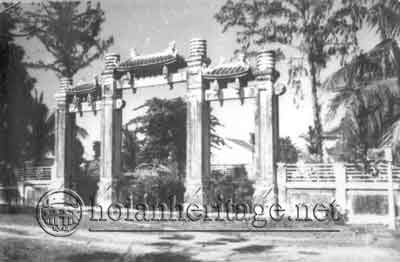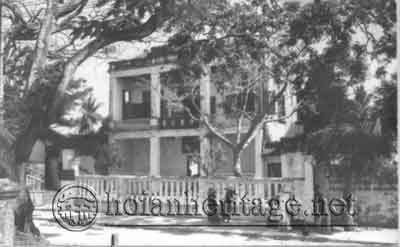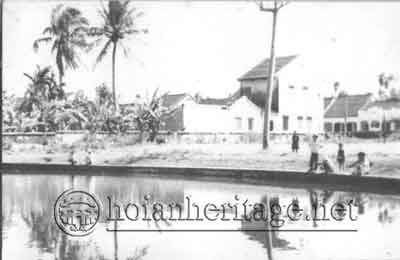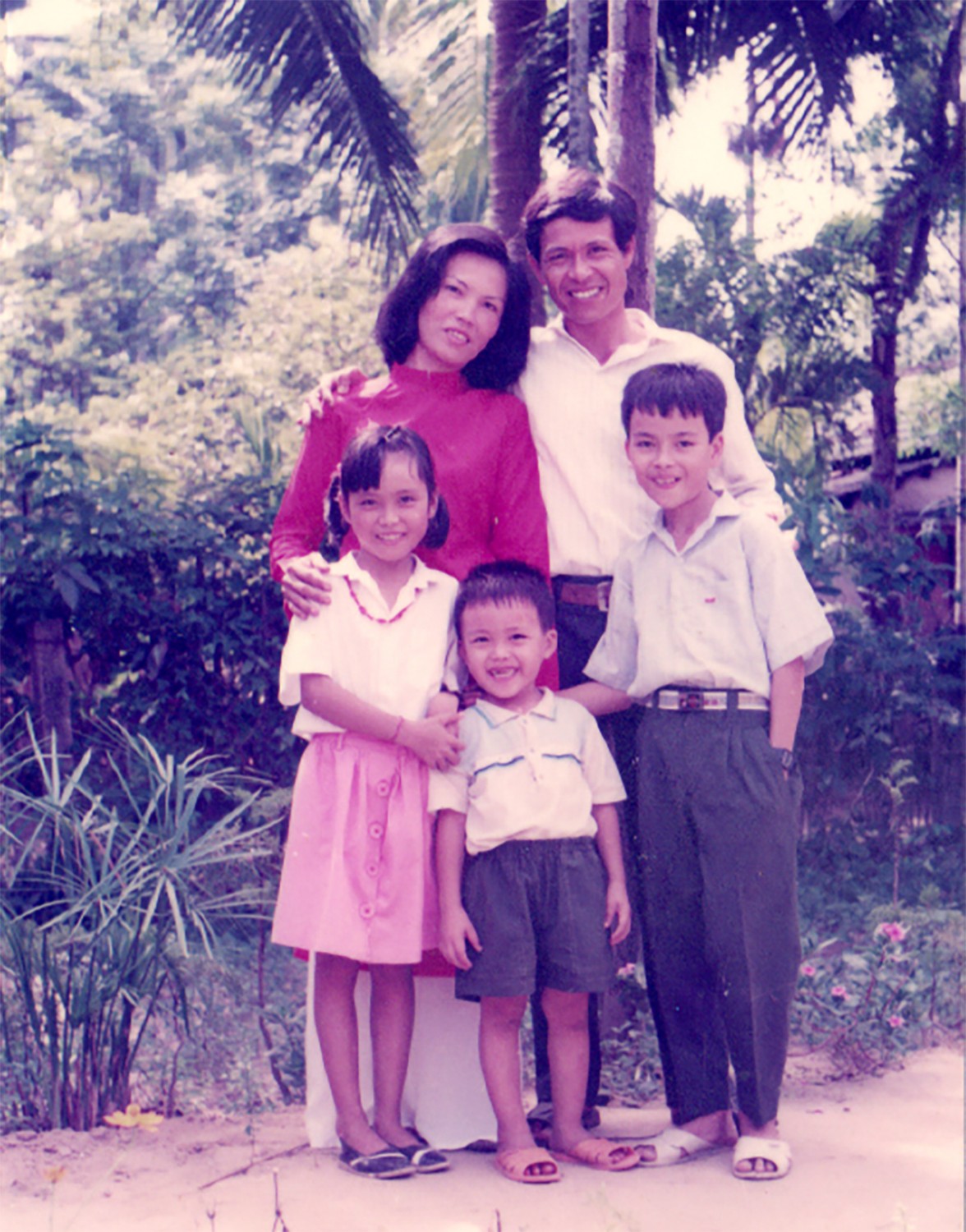Hoi An World Cultural Heritage Conservation Center
Information on the restoration results of the Japanese Covered Bridge , Hoi An
The year 2024 marks the 20th Hoi An - Japan Cultural Exchange event. During this event, Hoi An city held the inauguration ceremony of the restoration project of the Japanese Covered Bridge - Japanese Bridge - Lai Vien Kieu - a work of typical historical, cultural, architectural and artistic value and international exchange in the commercial port city of Hoi An.
The inauguration ceremony will take place on August 3, 2024 at the Japanese Covered Bridge relic with the participation of representatives of the Ministry of Culture, Sports and Tourism, the Ministry of Foreign Affairs, the Vietnam National Commission for UNESCO, the Department of Cultural Heritage (of the Ministry of Culture, Sports and Tourism), the UNESCO Office in Hanoi, the Agency of Cultural Affairs of Japan, the Special Ambassador of Vietnam - Japan, the Ambassador Extraordinary and Plenipotentiary of Japan to Vietnam, the Consulate General of Japan in Da Nang, the JICA Japan Office in Hanoi, the Sumitomo Foundation of Japan, and representatives of Japanese organizations and individuals participating in the 20th Hoi An - Japan cultural exchange festival, delegates of Quang Nam province, and delegates of Hoi An city.
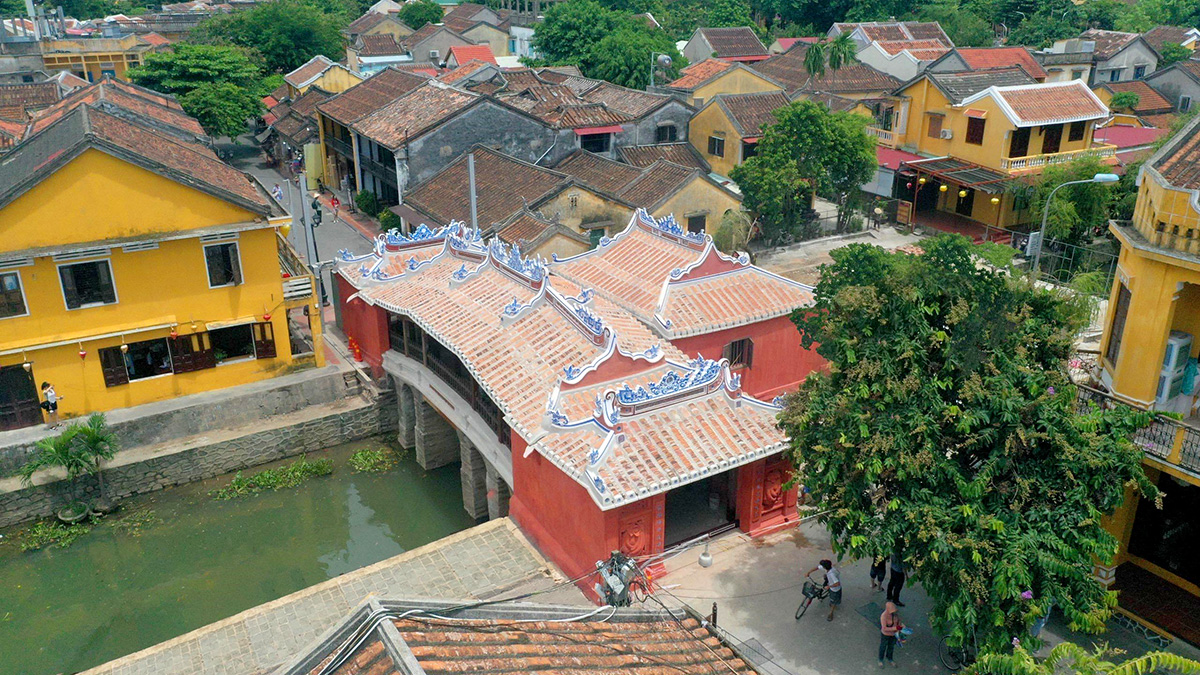
The Japanese Covered Bridge relic has existed for 400 years. Although it has been carefully preserved and respected by generations of Hoi An residents, under the harsh impact of natural conditions and time, the relic still cannot avoid damage and degradation.
According to many documents, from the time it was built until the end of the 20th century, the Japanese Covered Bridge has been restored at least 7 times in 1763, 1817, 1875, 1915, 1962, 1986, 1996. However, due to limitations in technical conditions and many other objective factors, recent restorations have not yet fundamentally resolved the causes leading to the degradation of the relic. Therefore, the issue of restoring the Japanese Covered Bridge continues to be raised and is becoming increasingly urgent.
On July 24, 1999, the Consultation Conference on the Restoration of the Japanese Covered Bridge was held with the attention of many experts in research and preservation of architectural heritage in the country. Over the next decade, the contents related to the restoration and rescue of the Japanese Covered Bridge were continuously discussed and debated. However, due to concerns that the Japanese Covered Bridge would become “new and younger”; and also because the most suitable solution for the restoration of a symbolic and valuable work like the Japanese Covered Bridge has not been found yet... for a long time, the restoration only stopped at the level of reinforcement and support to avoid the risk of the relic collapsing. However, in the face of the increasingly serious degradation of the Japanese Covered Bridge, on August 16, 2016, the International Conference on the Restoration of the Japanese Covered Bridge was held on a large scale with the participation of many scientists and leading experts in the restoration of wooden architectural relics in the country and Japan. Although the Workshop did not provide solutions for each specific issue, it reached a consensus on the common view that it is necessary and urgent to build a comprehensive and fundamental restoration project for the Pagoda Bridge with the aim of preserving the intact and long-term value of the relic. From there, the preparation work for the restoration of the Pagoda Bridge was focused on promoting many aspects of historical, cultural, architectural and artistic research; surveying and archaeology to assess the technical status and original traces; drawing and digitizing architecture; determining viewpoints, principles and restoration solutions; consulting experts; organizing the establishment, agreement and approval of documents;...
With careful and responsible project preparation, on December 28, 2022, the Japanese Covered Bridge was started to be restored in the belief and determination of the team of participants, in the excitement and anticipation of those who love Hoi An Cultural Heritage that the Japanese Covered Bridge will be restored in the best way to preserve the values of the relic intact. From the beginning, the project has built a very detailed overall progress plan for each stage, established project teams, Research and Communication Teams to regularly carry out many tasks such as: Surveying, collecting, synthesizing related documents, collecting opinions from the community; conducting research topics on contents related to the history, culture, architecture, fine arts, ... of the relic. In addition, the survey and assessment of the current status of the relic by the following forms: Filming, taking photos, printing Do paper (steles, parallel sentences, architectural decoration plans), drawing (current architectural status, construction techniques...), digitizing the relic by 3D technology,... are carried out carefully to create a scientific database to propose solutions and appropriate restoration forms to ensure the principles of restoration for each item and structure of the Japanese Covered Bridge relic. In addition, propaganda work on the website Hoianheritage.net, the Heritage Conservation radio section, the Hoi An Heritage Facebook page as well as connecting with newspapers and media to introduce and inform about the project; compile and publish the book Information on Research on Heritage Conservation of the Japanese Covered Bridge (bilingual Vietnamese-English), make a film introducing the value of the Japanese Covered Bridge and the direction of the restoration project... solicit opinions and information from domestic and international cultural heritage management agencies and international organizations.
The restoration of the Japanese Covered Bridge is carried out in the spirit of a "surgery - treatment" so all activities are careful, meticulous, methodical, scientific from the project preparation stage to organizational solutions and construction techniques for the restoration of the monument. In particular, the continued collection and research of information and documents; stratigraphic exploration, analysis of architectural traces through the periods; consultation with experts, researchers, artisans on newly discovered issues, arising problems;... are always focused on and carried out regularly and continuously throughout the restoration process.
With the viewpoint and solution of the restoration throughout the project is to preserve the integrity of the overall architectural form and structure, each part, component, original artifact, with historical value is treasured and preserved to the maximum extent possible. From each stone bar, brick, tile to masonry block; from wooden floor system components (beams, girders, floorboards), frames, roof rafters to each detail of the keel, wall panel; from the breed, roof edge to each detail of ceramic patterns, ancient plates; ... all are carefully considered, evaluated, studied to separate damaged components, trying to retain as much as possible the good components, using traditional construction techniques combined with modern materials and chemicals to reinforce, strengthen the solidity for reuse and reassembly. This is specifically and accurately reflected through the following statistics: nearly 60% of the wood volume, nearly 30% of the tiles, 80% of the ancient plates, 20% of the stone foundation structures, 35% of the decorative roof ridge figures, etc. are preserved and relocated at the relic after restoration.
An issue that always receives the attention of those who love architectural heritage in general, and the Japanese Covered Bridge relic in particular; at the same time, it is also the concern and worry of those who directly implement the project, which is how, after this major restoration, the Japanese Covered Bridge still retains its ancient features, the beauty tinged with time as we have always admired. Accordingly, the final color after restoration of the Japanese Covered Bridge was decided to keep the original color of all wooden structures, including decorative carvings, horizontal lacquered boards, parallel sentences, without any additional painting; the replacement structures or reinforced components are only coated with colorless preservatives. Similar to the abutment body, the bridge piers are also completely kept intact without any intervention in color.
Particularly for the walls and decorative details on the roof, they need to be restored, because the current state is almost completely faded, while their material structure is made of bricks, tiles, and lime mortar, most of which are rotten and have lost their connection, so they must be replaced or reinforced and patched to make use of them. Therefore, restoring the color of the walls and roof decoration is necessary, because if the original shade of the retained components is kept while they have been reinforced and patched, along with the components that must be replaced, it will not ensure aesthetics, especially it will lack the solemnity of a religious building like the Japanese Covered Bridge - which is an important function that has existed for hundreds of years, since before it was ranked as a relic. There are also opinions that the color tones and shades should be chosen to be closest to the image before restoration, or to make the Japanese Covered Bridge less "new". However, this is not consistent with the viewpoint and principle of "no falsification" that the Project has proposed, especially leading to concerns that it will distort the original elements, causing confusion, affecting the results of future research.
In fact, the color of the roof decoration system of the Japanese Covered Bridge was restored based on some existing locations with original colors, combined with the results of research and surveys of similar traditional religious works in Hoi An as proposed by experts through consultations and discussions. The restoration of color, no matter what, cannot avoid making the relic look "new", but more importantly, it has preserved the originality, ensuring the principles in the restoration of the relic in accordance with the inherent nature of the relic. Over time, the Japanese Covered Bridge has returned to its ancient, quiet features as it has experienced in history after restorations, or during each annual worship, festival, and New Year.
Article 9 of the 1964 Venice Charter on the Conservation and Restoration of Monuments and Sites clearly states: "The restoration process is a highly specialized operation. The purpose of restoration is to preserve and reveal the aesthetic and historical value of the relic, and must be based on respect for the original materials and authentic data. Restoration must stop as soon as there is any conjecture, and in that case, if it is deemed necessary to do something more for aesthetic or technical reasons, the additional part must be able to distinguish it from the architectural layout and must clearly mark the date of implementation. In any case, before and after restoration, there must be archaeological and historical research on the relic”.
After more than 19 months of restoration, at the end of July 2024, the restoration of the Japanese Covered Bridge was completed in a systematic and scientific manner, both preserving the original elements and ensuring the long-term stability of the structure of the relic, meeting the expectations of the people and those who love and cherish this architectural work of special value.
With the view of both restoring the relic and serving the religious and sightseeing needs of the people and tourists, during the restoration period, thousands of people came to learn about the restoration work and practice their beliefs, and 978,199 tourists came to visit.
Hoi An Center for Cultural Heritage Management and Preservation - the unit assigned to preside over the project implementation received the attention of leaders of Quang Nam province and Hoi An city; professional agencies at all levels; domestic and foreign experts, researchers, managers; international cooperation organizations from Japan; design, supervision and construction units; news agencies and newspapers; especially the people and tourists who enthusiastically supported, helped, sympathized and shared the difficulties and obstacles during the project implementation process.
The dossier on the restoration process of the Japanese Covered Bridge relic has been collected, compiled and published by the Hoi An Center for Cultural Heritage Management and Preservation under the name "CONSERVATION PROJECT OF THE JAPANESE COVERED BRIDGE" and released on the occasion of the inauguration on August 3, 2024 with the hope of bringing to managers, scientists, experts, tourists from near and far, and Hoi An people a thorough, insightful view, and a better understanding of the restoration process of the Japanese Covered Bridge relic. This is also an important database for today's and future generations in the work of managing, preserving and promoting the Japanese Covered Bridge relic.

The Japanese Covered Bridge relic has existed for 400 years. Although it has been carefully preserved and respected by generations of Hoi An residents, under the harsh impact of natural conditions and time, the relic still cannot avoid damage and degradation.
According to many documents, from the time it was built until the end of the 20th century, the Japanese Covered Bridge has been restored at least 7 times in 1763, 1817, 1875, 1915, 1962, 1986, 1996. However, due to limitations in technical conditions and many other objective factors, recent restorations have not yet fundamentally resolved the causes leading to the degradation of the relic. Therefore, the issue of restoring the Japanese Covered Bridge continues to be raised and is becoming increasingly urgent.
On July 24, 1999, the Consultation Conference on the Restoration of the Japanese Covered Bridge was held with the attention of many experts in research and preservation of architectural heritage in the country. Over the next decade, the contents related to the restoration and rescue of the Japanese Covered Bridge were continuously discussed and debated. However, due to concerns that the Japanese Covered Bridge would become “new and younger”; and also because the most suitable solution for the restoration of a symbolic and valuable work like the Japanese Covered Bridge has not been found yet... for a long time, the restoration only stopped at the level of reinforcement and support to avoid the risk of the relic collapsing. However, in the face of the increasingly serious degradation of the Japanese Covered Bridge, on August 16, 2016, the International Conference on the Restoration of the Japanese Covered Bridge was held on a large scale with the participation of many scientists and leading experts in the restoration of wooden architectural relics in the country and Japan. Although the Workshop did not provide solutions for each specific issue, it reached a consensus on the common view that it is necessary and urgent to build a comprehensive and fundamental restoration project for the Pagoda Bridge with the aim of preserving the intact and long-term value of the relic. From there, the preparation work for the restoration of the Pagoda Bridge was focused on promoting many aspects of historical, cultural, architectural and artistic research; surveying and archaeology to assess the technical status and original traces; drawing and digitizing architecture; determining viewpoints, principles and restoration solutions; consulting experts; organizing the establishment, agreement and approval of documents;...
With careful and responsible project preparation, on December 28, 2022, the Japanese Covered Bridge was started to be restored in the belief and determination of the team of participants, in the excitement and anticipation of those who love Hoi An Cultural Heritage that the Japanese Covered Bridge will be restored in the best way to preserve the values of the relic intact. From the beginning, the project has built a very detailed overall progress plan for each stage, established project teams, Research and Communication Teams to regularly carry out many tasks such as: Surveying, collecting, synthesizing related documents, collecting opinions from the community; conducting research topics on contents related to the history, culture, architecture, fine arts, ... of the relic. In addition, the survey and assessment of the current status of the relic by the following forms: Filming, taking photos, printing Do paper (steles, parallel sentences, architectural decoration plans), drawing (current architectural status, construction techniques...), digitizing the relic by 3D technology,... are carried out carefully to create a scientific database to propose solutions and appropriate restoration forms to ensure the principles of restoration for each item and structure of the Japanese Covered Bridge relic. In addition, propaganda work on the website Hoianheritage.net, the Heritage Conservation radio section, the Hoi An Heritage Facebook page as well as connecting with newspapers and media to introduce and inform about the project; compile and publish the book Information on Research on Heritage Conservation of the Japanese Covered Bridge (bilingual Vietnamese-English), make a film introducing the value of the Japanese Covered Bridge and the direction of the restoration project... solicit opinions and information from domestic and international cultural heritage management agencies and international organizations.
The restoration of the Japanese Covered Bridge is carried out in the spirit of a "surgery - treatment" so all activities are careful, meticulous, methodical, scientific from the project preparation stage to organizational solutions and construction techniques for the restoration of the monument. In particular, the continued collection and research of information and documents; stratigraphic exploration, analysis of architectural traces through the periods; consultation with experts, researchers, artisans on newly discovered issues, arising problems;... are always focused on and carried out regularly and continuously throughout the restoration process.
With the viewpoint and solution of the restoration throughout the project is to preserve the integrity of the overall architectural form and structure, each part, component, original artifact, with historical value is treasured and preserved to the maximum extent possible. From each stone bar, brick, tile to masonry block; from wooden floor system components (beams, girders, floorboards), frames, roof rafters to each detail of the keel, wall panel; from the breed, roof edge to each detail of ceramic patterns, ancient plates; ... all are carefully considered, evaluated, studied to separate damaged components, trying to retain as much as possible the good components, using traditional construction techniques combined with modern materials and chemicals to reinforce, strengthen the solidity for reuse and reassembly. This is specifically and accurately reflected through the following statistics: nearly 60% of the wood volume, nearly 30% of the tiles, 80% of the ancient plates, 20% of the stone foundation structures, 35% of the decorative roof ridge figures, etc. are preserved and relocated at the relic after restoration.
An issue that always receives the attention of those who love architectural heritage in general, and the Japanese Covered Bridge relic in particular; at the same time, it is also the concern and worry of those who directly implement the project, which is how, after this major restoration, the Japanese Covered Bridge still retains its ancient features, the beauty tinged with time as we have always admired. Accordingly, the final color after restoration of the Japanese Covered Bridge was decided to keep the original color of all wooden structures, including decorative carvings, horizontal lacquered boards, parallel sentences, without any additional painting; the replacement structures or reinforced components are only coated with colorless preservatives. Similar to the abutment body, the bridge piers are also completely kept intact without any intervention in color.
Particularly for the walls and decorative details on the roof, they need to be restored, because the current state is almost completely faded, while their material structure is made of bricks, tiles, and lime mortar, most of which are rotten and have lost their connection, so they must be replaced or reinforced and patched to make use of them. Therefore, restoring the color of the walls and roof decoration is necessary, because if the original shade of the retained components is kept while they have been reinforced and patched, along with the components that must be replaced, it will not ensure aesthetics, especially it will lack the solemnity of a religious building like the Japanese Covered Bridge - which is an important function that has existed for hundreds of years, since before it was ranked as a relic. There are also opinions that the color tones and shades should be chosen to be closest to the image before restoration, or to make the Japanese Covered Bridge less "new". However, this is not consistent with the viewpoint and principle of "no falsification" that the Project has proposed, especially leading to concerns that it will distort the original elements, causing confusion, affecting the results of future research.
In fact, the color of the roof decoration system of the Japanese Covered Bridge was restored based on some existing locations with original colors, combined with the results of research and surveys of similar traditional religious works in Hoi An as proposed by experts through consultations and discussions. The restoration of color, no matter what, cannot avoid making the relic look "new", but more importantly, it has preserved the originality, ensuring the principles in the restoration of the relic in accordance with the inherent nature of the relic. Over time, the Japanese Covered Bridge has returned to its ancient, quiet features as it has experienced in history after restorations, or during each annual worship, festival, and New Year.
Article 9 of the 1964 Venice Charter on the Conservation and Restoration of Monuments and Sites clearly states: "The restoration process is a highly specialized operation. The purpose of restoration is to preserve and reveal the aesthetic and historical value of the relic, and must be based on respect for the original materials and authentic data. Restoration must stop as soon as there is any conjecture, and in that case, if it is deemed necessary to do something more for aesthetic or technical reasons, the additional part must be able to distinguish it from the architectural layout and must clearly mark the date of implementation. In any case, before and after restoration, there must be archaeological and historical research on the relic”.
After more than 19 months of restoration, at the end of July 2024, the restoration of the Japanese Covered Bridge was completed in a systematic and scientific manner, both preserving the original elements and ensuring the long-term stability of the structure of the relic, meeting the expectations of the people and those who love and cherish this architectural work of special value.
With the view of both restoring the relic and serving the religious and sightseeing needs of the people and tourists, during the restoration period, thousands of people came to learn about the restoration work and practice their beliefs, and 978,199 tourists came to visit.
Hoi An Center for Cultural Heritage Management and Preservation - the unit assigned to preside over the project implementation received the attention of leaders of Quang Nam province and Hoi An city; professional agencies at all levels; domestic and foreign experts, researchers, managers; international cooperation organizations from Japan; design, supervision and construction units; news agencies and newspapers; especially the people and tourists who enthusiastically supported, helped, sympathized and shared the difficulties and obstacles during the project implementation process.
The dossier on the restoration process of the Japanese Covered Bridge relic has been collected, compiled and published by the Hoi An Center for Cultural Heritage Management and Preservation under the name "CONSERVATION PROJECT OF THE JAPANESE COVERED BRIDGE" and released on the occasion of the inauguration on August 3, 2024 with the hope of bringing to managers, scientists, experts, tourists from near and far, and Hoi An people a thorough, insightful view, and a better understanding of the restoration process of the Japanese Covered Bridge relic. This is also an important database for today's and future generations in the work of managing, preserving and promoting the Japanese Covered Bridge relic.
Some photos of the Japanese Covered Bridge before and after conservation:



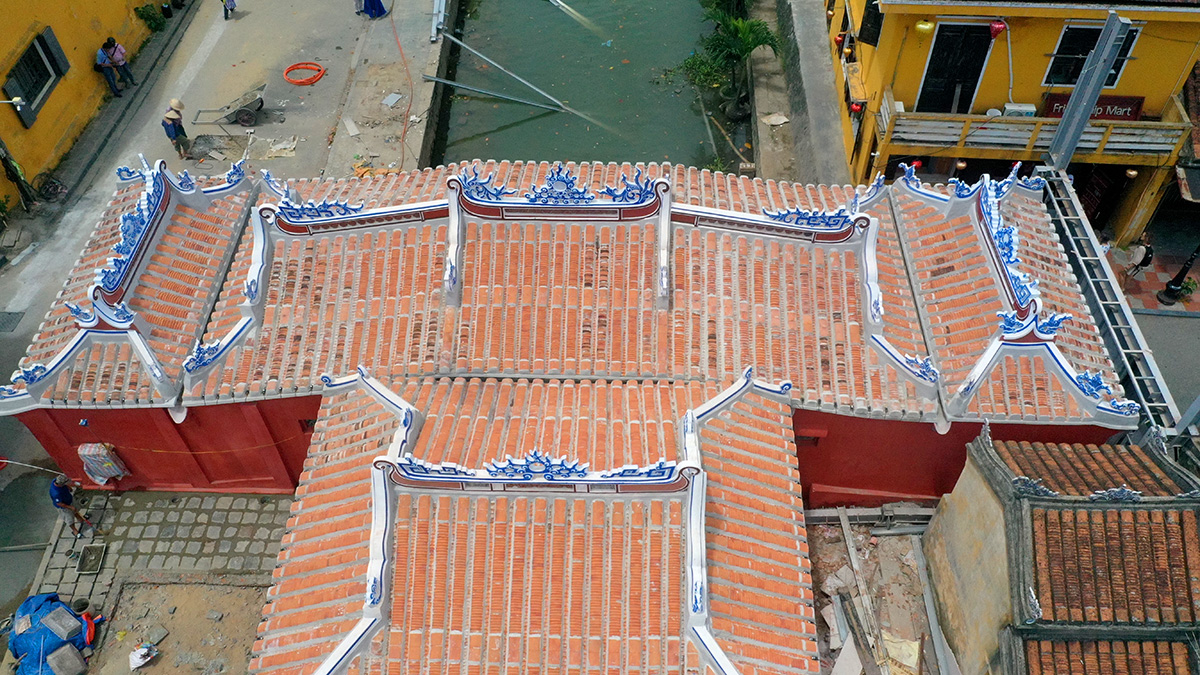

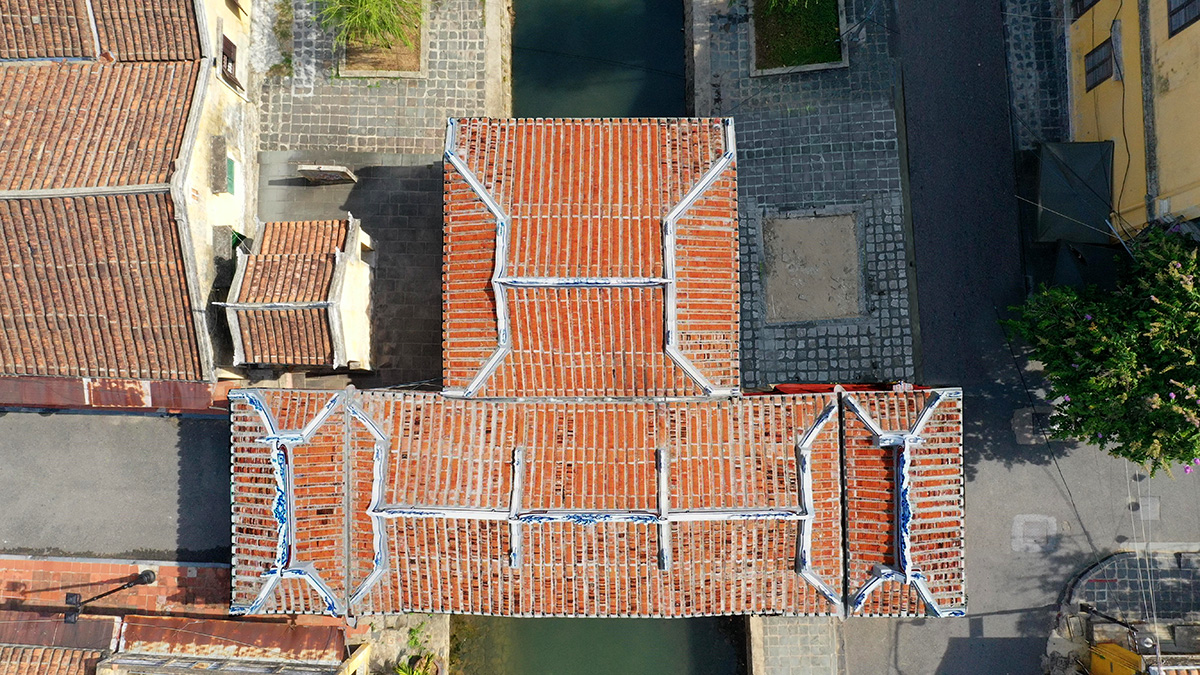
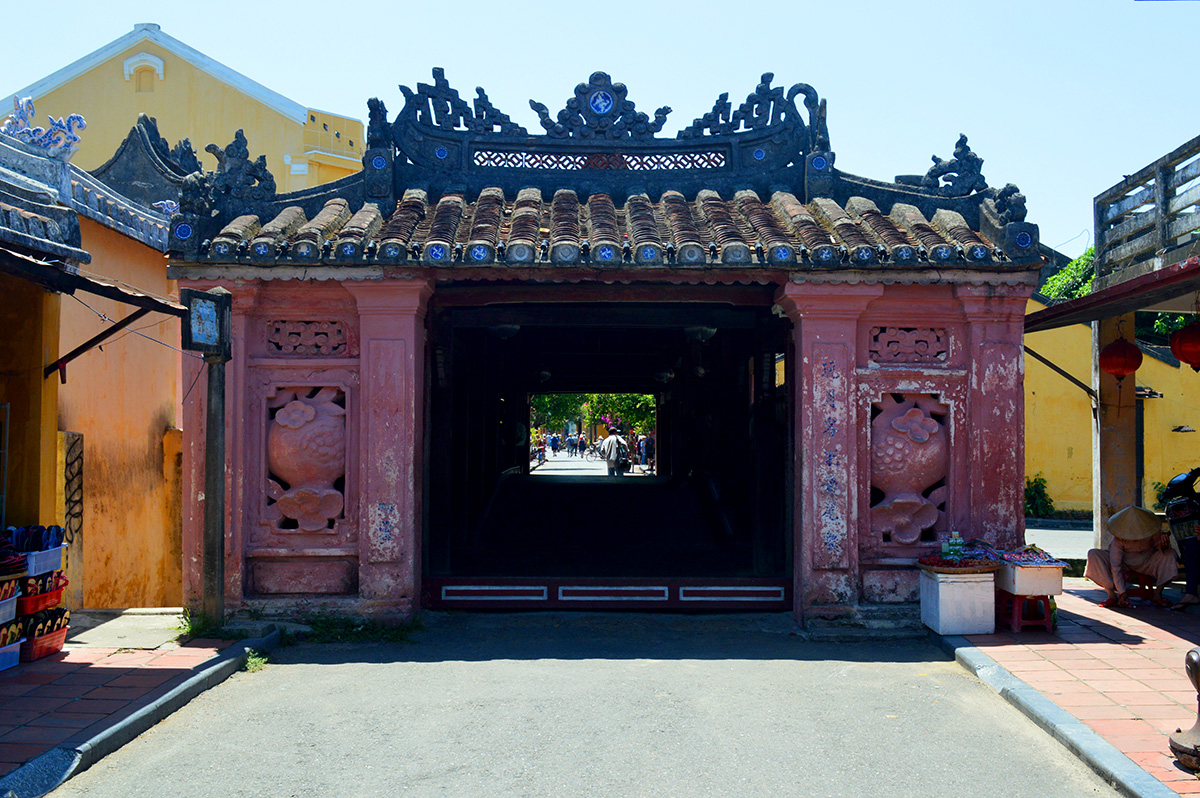

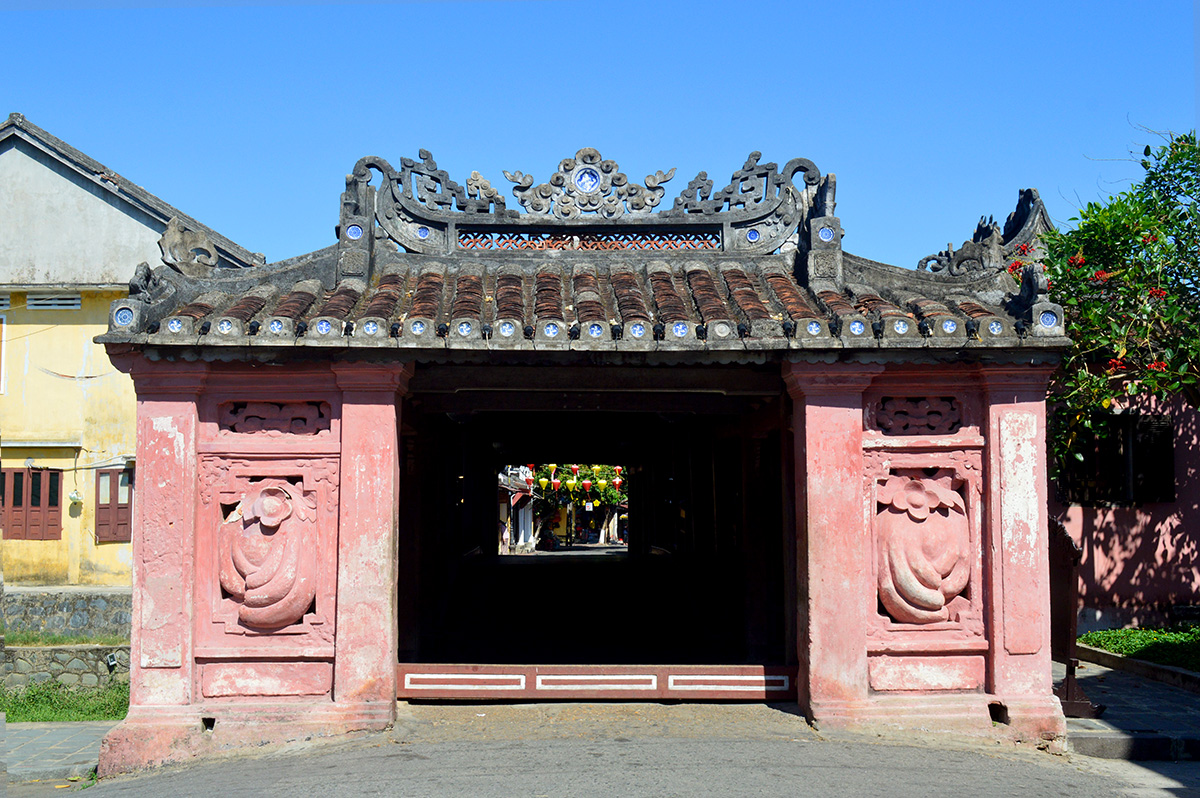
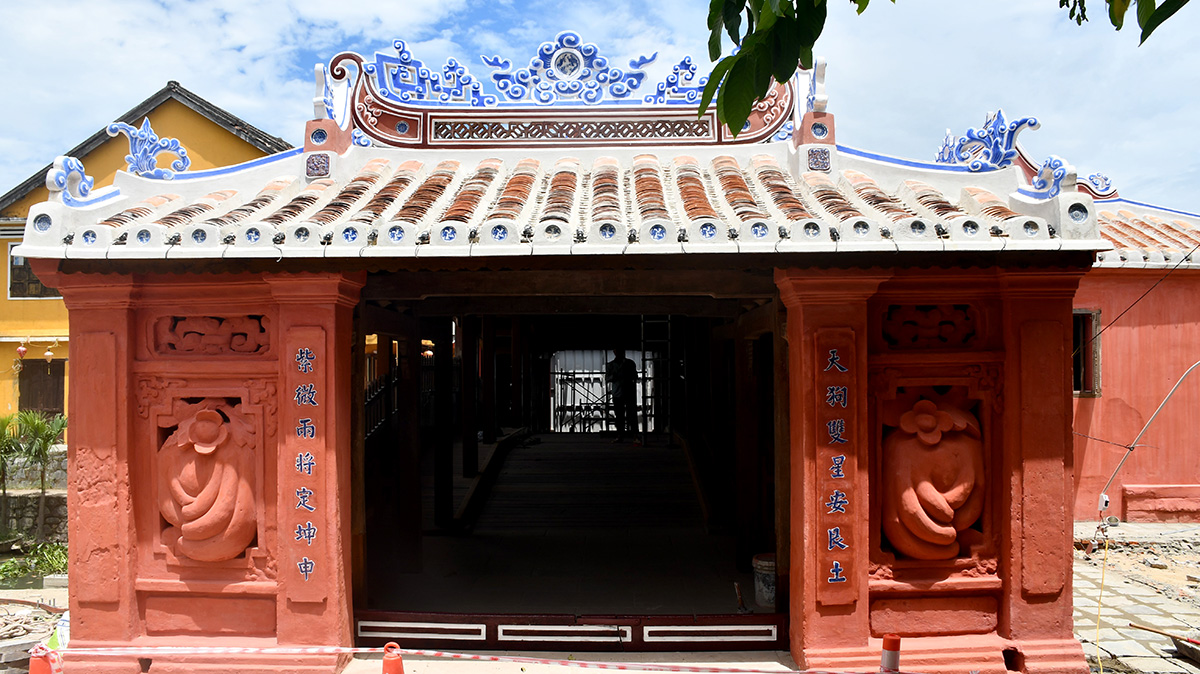

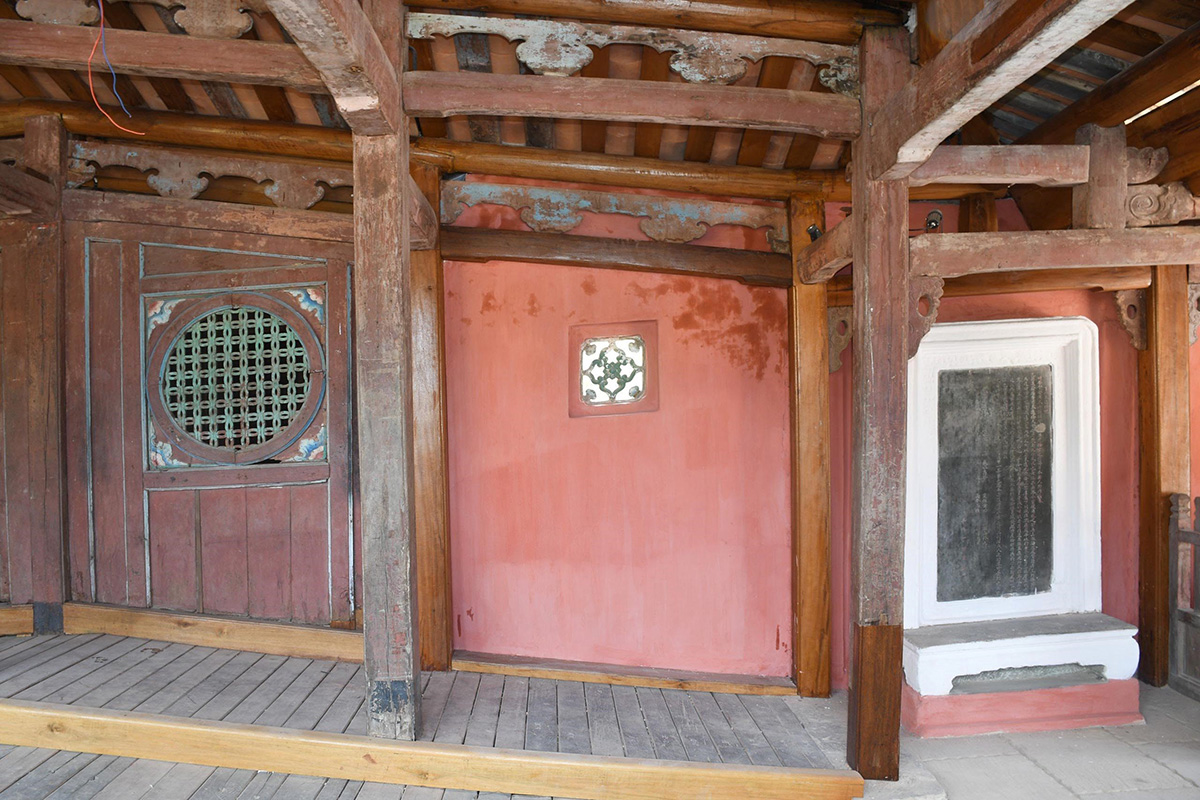






Author: Hoi An Center for Cultural Heritage Management and Preservation
Source: Hoi An Center for Cultural Heritage Management and Preservation
Newer articles
Older articles

